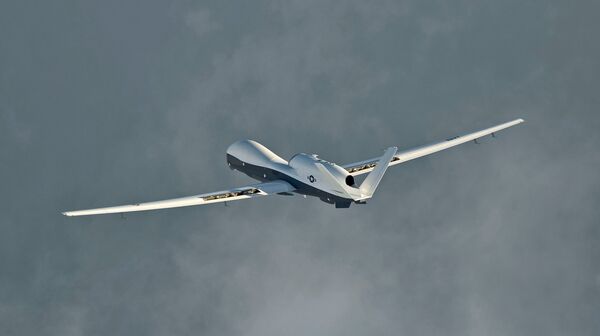
A file photo of a Triton UAV. The US Navy HALE UAV has joined the US Air Force Global Hawk and NATO Phoenix UAVs now operating out of Sigonella in Italy. (US Navy)
The US Navy (USN) has commenced operations of its Northrop Grumman MQ-4C Triton Broad Area Maritime System (BAMS) in the European theatre, with the first unmanned aerial vehicle (UAV) departing Naval Air Station (NAS) Sigonella in Sicily for its first sortie on 17 April.
The milestone was logged by online flight tracking services about two weeks after the USN announced in late March that the first of an undisclosed number of UAVs had arrived in its Sixth Fleet area of operations.
Derived from the Block 30 RQ-4N naval variant of the RQ-4 Global Hawk high-altitude long-endurance (HALE) UAV, the Triton has been developed to provide the USN with a persistent maritime intelligence, surveillance, and reconnaissance (ISR) capability in support of a full range of military operations that includes signals intelligence, communications relay, and search and rescue.
The Triton is equipped with a sensor package that includes Northrop Grumman's AN/ZPY-3 multifunction active sensor, as well as an automatic identification system (AIS) to identify and track shipping. With a range of approximately 8,200 n miles and an endurance of 30 hours, the UAV has the ability to cover more than 2.7 million square miles in a single mission.
Having entered operational service with the USN in 2020, the Tritons of Unmanned Patrol Squadron (VUP)-19 (the navy's first unmanned patrol squadron) have previously been deployed to the Seventh Fleet in the Indo-Pacific region. Speaking to Janes
Looking to read the full article?
Gain unlimited access to Janes news and more...







